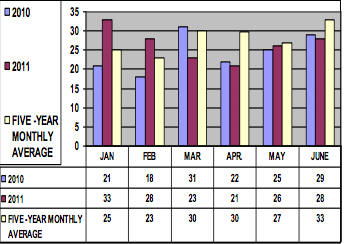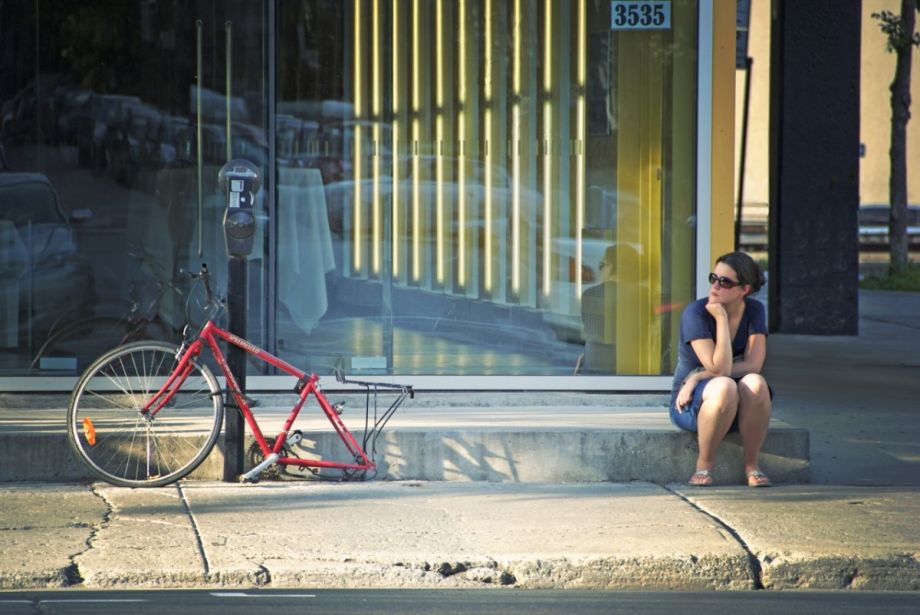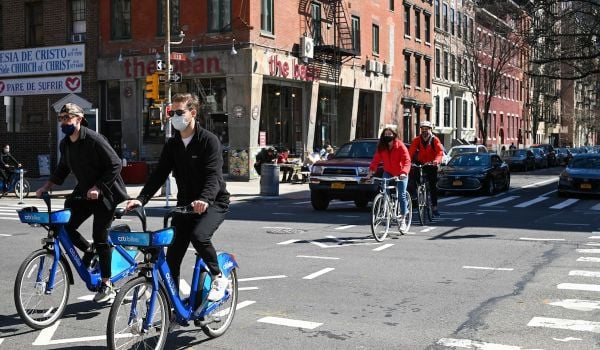Thursday night, after a long day in which I got run out of a bike lane by a truck and taken a fall, I locked my bike to the railing outside my house. I usually keep my bike indoors, but this time, exhausted, I locked it outside and forgot about it. Within 24 hours, the bike and the lock were gone. It was a new bike, purchased specifically to make the daily climb up the hill to Brewerytown a bit more manageable, and I should have been more careful given that it was still a little shiny. I should have locked it up with two locks, or three. In reality, since this is Philly, I never should have left it outside.
That’s the kind of city Philadelphia is — a place where you can’t lock a bike overnight, not even to a railing in front of your house in one of the city’s best neighborhoods. It’s a place where criminals act on opportunity and with impunity.
This year’s crime statistics for Philadelphia look pretty terrible. We are halfway through the year and so far, 185 people have been victims of homicide — a 7 percent drop since 2007, but a number higher than it was in 2008, 2009 or 2010, and 22 percent higher than 2011. It is six more homicides than were recorded in New York City during the same period — and in case you’ve forgotten, New York is a city more than five times Philadelphia’s size. Aggravated gun assaults are also up 13 percent over 2011. While car thefts and muggings are down both by 16 percent, residential burglary is up 5 percent and regular theft (the kind I experienced) is up 8 percent since last year.
Philadelphia isn’t the only city facing a rise in crime. Chicago is dealing with a crime wave and has 38 percent more homicides this year-to-date than last. And even New York City has seen its overall crime rate increase by 4 percent in the past two years.
When Philadelphia Mayor Michael Nutter first took office in 2008, he supported efforts to hire ex-offenders and increased the use of stop-and-frisk patrols. More recently, when the city suffered 31 murders this past January, Nutter announced several new initiatives to lower the city’s crime rate, including automatic jail time for illegal guns, increased police presence and the opportunity to get $20,000 for reporting a murder. But these new efforts have failed to materialize.
According to the police department, no one this year has been rewarded for reporting a murder. When you go to the Philadelphia police’s website, nowhere is the reward for homicide tips mentioned, nor has there been an awareness campaign in neighborhoods where people would most likely take advantage of the reward system. When asked how the police has publicized this initiative, I was told there was one press conference.
While I don’t doubt the professionalism and dedication of Philadelphia’s police and government, or that crime is indeed a top priority for Mayor Nutter, I do question whether the city can become drastically safer in a short period. Much of the conversation about how to improve Philadelphia’s safety has revolved around improving employment options and our education system, but for those of us locking up storefronts tonight or walking home alone in a desolate neighborhood, we don’t have a generation to wait to feel safe.

The homicide rate in Philly rose between 2010 and 2011. Credit: Philadelphia Police Dept
One thinks about other municipal systems that have been radically overhauled, such as the Philadelphia Parking Authority. If you have lived in the city for one month, you know that you can’t disobey the parking rules or you will get caught and fined. How is the parking authority, with a fraction of the employees of the police department, so efficient? It has a near constant patrol of Center City, a surveillance system that extends beyond just cameras and a dogged approach to going after violators. Nearly everyone gets a parking ticket once or twice, but ultimately people stop parking illegally because they don’t want to pay the fines.
Currently there’s too little a deterrent to committing crimes in the city. Stealing a bike is a small crime of opportunity, sort of like parking illegally; whoever took my bike knew there was no chance of getting caught. And it’s not just stealing bikes that’s too easy. In my neighborhood, drug-dealing and after-hours prostitution are commonplace. In other neighborhoods, the crimes are more violent but equally tolerated.
What caused New York’s crime rate to drop by over 75 percent in the past two decades? There are a number of opinions, but many researchers believe that arrests for the basic crimes will deter larger crimes from occurring. During this same period, arrests for misdemeanors have risen by 70 percent.
While I’m not in favor of mass incarceration, and while I do believe that employment and education are the real answers to reversing our crime epidemic, new approaches to street crime need to be considered. We have as many police officers per capita as New York City (about one officer per 225 people), and while our demographics are drastically different from New York’s, that’s no reason we shouldn’t be creating a vastly safer city for everyone. The “broken windows” theory isn’t new, and neither are the initiatives Mayor Nutter outlined earlier this year. But enforcing them would be a real change, one that I am sure would actually make a difference.

Diana Lind is the former executive director and editor in chief of Next City.
















